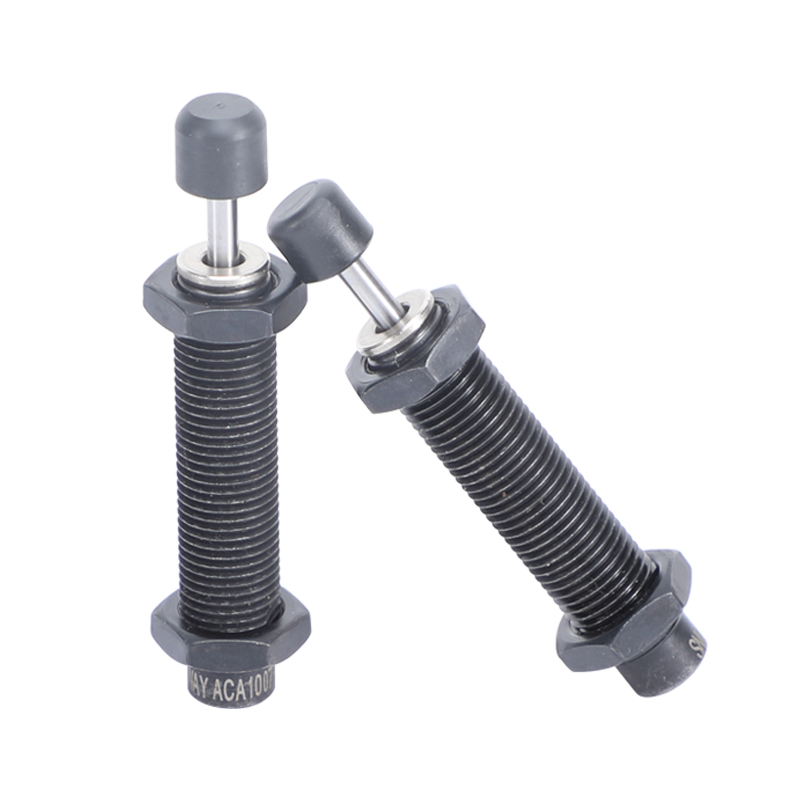Hydraulic buffer (shock absorber) relies on hydraulic damping to buffer and decelerate objects acting on it to a stop, playing a certain degree of protection. It is suitable for mechanical equipment such as hoisting and transportation, elevators, metallurgy, port machinery, railway vehicles, etc. Its function is a safety buffer device to prevent mechanical damage caused by hard collision during work.
How the hydraulic buffer works
The hydraulic cylinder is connected to the gun body. During the shooting process, the gun body drives the hydraulic cylinder to recoil together. The piston rod of the buffer is connected to the shoulder rest and presses against the shooter's shoulder. The cavity formed by the rod and the hydraulic cylinder is filled with hydraulic oil. After firing, the gun body recoils under the combined force of the gun barrel, the shoulder rest can be considered fixed, the hydraulic cylinder moves backward relative to the piston rod, the volume of the I chamber decreases, and the liquid pressure increases, forcing the hydraulic oil to pass between the hydraulic cylinder and the piston. The annular leak flows into the II cavity, and the buffer spring is compressed at the same time to store the re-entry energy.
Due to the annular leakage area Ⅱ. It is much smaller than the piston area, so the liquid flows at a high speed when flowing through the annular leak, creating a large resistance, which plays a buffering role in the recoil of the gun body. When the recoil energy of the gun body is consumed, the gun body sits back to the rear. At this time, the buffer spring relaxes, pushing the gun body back to the pre-firing position. The piston rod moves backward relative to the hydraulic cylinder, and the hydraulic oil passes through the annular leak. Convex and flow back into cavity I.
Are oil pressure buffers and hydraulic shock absorbers the same thing? Answer: Oil pressure buffer< /strong> and hydraulic buffer are the same thing, they just have two names.

Buffering distance of hydraulic buffer
In order to prevent the traction drive elevator from overspeeding when the car is running upward, causing the elevator to rush to the top, the elevator is equipped with an upper station forced deceleration switch, an upper limit protection switch, Upper limit protection switch, upward overspeed protection device, counterweight buffer, etc. are used as safety protection devices. Among them, the upper limit protection switch and the upper limit protection switch are used to protect the safety of the elevator through brake braking. When the brake of the elevator car fails at the leveling position of the highest floor station and the counterweight is greater than the weight of the car, the elevator will slide upward and a roofing accident occurs. At this time, when the car is at the leveling position of the highest floor station, the energy storage For type buffers, the distance between the top surface of the buffer and the strike plate of the counterweight device should be 200mm-350mm. For energy-consuming buffers, this distance should be 150mm-400mm.






 WhatsApp: +8615857777578
WhatsApp: +8615857777578